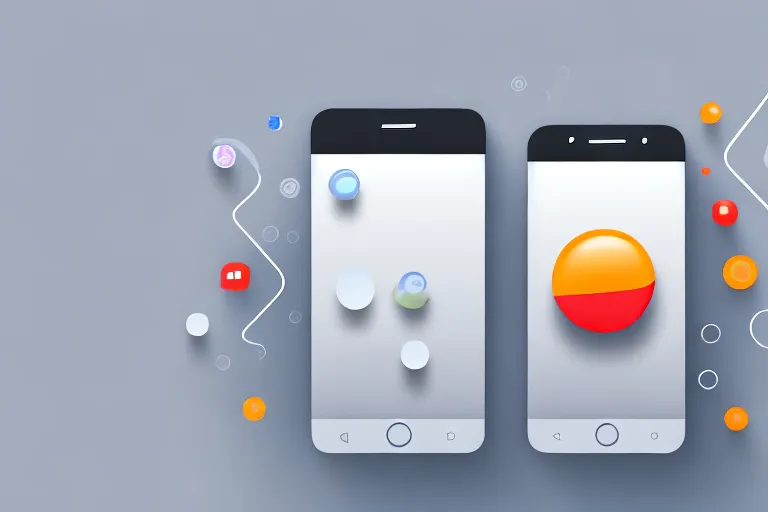In this article, we will delve into the reasons behind the transition from RCS (Rich Communication Services) to SMS (Short Message Service). Understanding the differences between these two communication protocols is crucial in comprehending the motivation behind this change.
Understanding RCS and SMS
RCS message, or Rich Communication Service message, is a messaging protocol that offers an enhanced communication experience compared to traditional SMS. It allows users to send multimedia messages, share files, and enjoy advanced features like read receipts and typing indicators. On the other hand, SMS, or Short Message Service, is a basic text messaging system that has been the standard for many years.
Defining RCS: The Basics
RCS messaging operates over the internet and requires a data connection to function. It provides a more featured rich media messaging experience by leveraging the capabilities of smartphones. Users can send high-quality images and videos, create group chats, and even make payments through RCS.One of the key advantages of RCS is its ability to send multimedia messages. Unlike SMS, which is limited to plain text, RCS allows users to send and receive images, videos, and audio files through rich text messaging service. This opens up a whole new world of communication possibilities, allowing users to share their experiences in a more immersive way.Additionally, RCS messaging service supports advanced features like read receipts and typing indicators. With read receipts, users can see if their message has been read by the recipient, providing a level of transparency and accountability that SMS lacks. Typing indicators, on the other hand, let users know when the other person is typing a response, creating a more interactive and real-time conversation experience.RCS also enables users to create group chats, making it easier to communicate with multiple people at once. Whether it's planning a group outing or discussing a project, RCS group chats provide a convenient platform for collaboration and coordination.Furthermore, RCS business messaging goes beyond just messaging. It allows users to make payments directly within the messaging app, eliminating the need for separate payment apps or services. This integration of payment functionality adds a new level of convenience and simplicity to everyday transactions.
SMS: A Brief Overview
SMS, in contrast, relies on a cellular network and does not require an internet connection. It is a text-only service and lacks the advanced features of RCS. SMS has been widely used for basic communication, such as sending simple text messages and receiving notifications.Despite its limitations, SMS has been the go-to messaging service for many years. Its simplicity and widespread compatibility have made it a reliable means of communication, especially in areas with limited internet connectivity or older devices that do not support RCS.While SMS may not offer the same level of functionality as RCS, it still serves an important role in everyday communication. From sending quick messages to receiving important alerts and notifications, SMS continues to be a reliable and widely accessible messaging option.It's worth noting that RCS and SMS can coexist on the same device, allowing users to seamlessly switch between the two depending on their needs and the capabilities of the recipient's device. This compatibility ensures that users can communicate effectively regardless of the messaging protocol being used.In conclusion, RCS and SMS offer different messaging experiences, each with its own set of advantages and limitations. RCS provides a more feature-rich and immersive communication experience, while SMS remains a reliable and widely accessible option. As technology continues to evolve, it will be interesting to see how these messaging protocols develop and shape the future of communication.
The Technical Differences Between RCS and SMS
To understand why RCS is transitioning to SMS, it is important to explore the technical aspects of both protocols.RCS, or Rich Communication Services, works by utilizing IP (Internet Protocol) technology to send messages between devices. It operates in real-time, allowing for instant communication. This protocol requires a compatible messaging app and network support from the service provider.With RCS, users can enjoy a wide range of advanced features, such as read receipts, typing indicators, high-quality media sharing, and group messaging. It also supports larger message sizes, allowing for more extensive conversations without the need for splitting messages into multiple parts.Additionally, RCS enables users to engage in enriched conversations with interactive elements, such as suggested replies, suggested actions, and rich cards. These features enhance the overall messaging experience, making it more dynamic and engaging.
How RCS Works
RCS operates by establishing a direct connection between the sender and the recipient through the internet. When a user sends an RCS message, it is first encrypted and then transmitted over the IP network. The recipient's device receives the message and decrypts it, allowing for seamless communication.One of the key advantages of RCS is its ability to support a wide range of media types, including images, videos, audio files, and documents. This allows users to share rich messaging content with each other, enhancing the overall messaging experience.Furthermore, RCS supports real-time typing indicators, which let users see when the other person is typing a response. This feature adds a sense of immediacy to the conversation, making it feel more like an in-person interaction.
The Functioning of SMS
SMS, or Short Message Service, works differently from RCS. It uses the traditional circuit-switched technology of the cellular network to transmit messages. Instead of relying on internet connectivity, SMS relies on the signal strength of the cellular network, making it available even in areas with weak or no internet coverage.Unlike RCS, SMS has certain limitations in terms of features and capabilities. It primarily supports plain text messages with a maximum length of 160 characters. If a message exceeds this limit, it gets split into multiple parts, which may arrive out of order or cause confusion for the recipient.Moreover, SMS does not support advanced features like read receipts, typing indicators, or media sharing. It is a simple and straightforward messaging protocol that focuses on delivering short text messages reliably.Despite its limitations, SMS remains a widely used communication method due to its broad compatibility across different devices and networks. It is supported by virtually all mobile phones and can be used to reach users who do not have access to RCS or internet connectivity.In conclusion, while RCS offers a more advanced and feature-rich messaging experience, SMS continues to play a crucial role in ensuring universal communication accessibility. The transition from RCS to SMS aims to strike a balance between innovation and inclusivity, providing users with a seamless messaging experience regardless of their device or network capabilities.
The Transition from RCS to SMS
Now that we have explored the technical differences between RCS and SMS, let's delve into the reasons behind the transition.
Reasons for RCS Switching to SMS
One of the primary reasons behind the transition is the widespread availability of SMS. SMS is universally supported by mobile devices and can reach users who may not have access to RCS-enabled smartphones or compatible networks.Additionally, SMS is a more resilient and reliable protocol. It can withstand network congestion and does not rely on internet connectivity, ensuring the delivery of messages even in challenging network conditions.
The Process of Transition
The transition from RCS to SMS involves migrating existing RCS users to SMS-based communication. Service providers may gradually phase out RCS or provide a fallback option to SMS when RCS capabilities are not available.This transition can be seamless for users, with the system automatically selecting the most appropriate communication protocol based on network availability and device compatibility.
The Impact of the Change on Users
Switching from RCS to SMS has both advantages and disadvantages for users. Let's explore the impact of this change.
User Experience: RCS vs SMS
RCS offers an enhanced user experience with interactive features and multimedia support. Users can enjoy features like typing indicators, read receipts, and high-quality media sharing. On the other hand, SMS provides a more basic messaging experience with limited functionality.
The Pros and Cons of the Switch for Users
The transition to SMS ensures that all users, regardless of their device or network capabilities, can communicate seamlessly. However, it does come with certain limitations. Users will lose access to advanced features available in RCS, such as file sharing or group chats.On the positive side, SMS is a widely compatible protocol that ensures message delivery even in areas with weak or no internet connectivity. Users can rely on SMS as a universal means of communication.
Future Predictions for RCS and SMS
Looking ahead, it is essential to consider the potential evolution of RCS and the longevity of SMS in the digital age.
The Potential Evolution of RCS
RCS has the potential to continue evolving and offering new features. As technology advances and network support improves, RCS may become more widely adopted, providing an enhanced messaging experience to a larger user base.
The Longevity of SMS in the Digital Age
Despite the rise of advanced messaging protocols like RCS, SMS continues to play a vital role in communication. Its universal support and reliability make it a resilient and enduring protocol that will likely remain relevant for years to come.In conclusion, the transition from RCS to SMS is driven by the widespread availability and reliability of SMS, ensuring seamless communication for all users. While RCS offers advanced features and a richer user experience, SMS remains a universal and steadfast communication protocol. As technology evolves, both protocols will continue to shape and influence the way we connect with one another.

